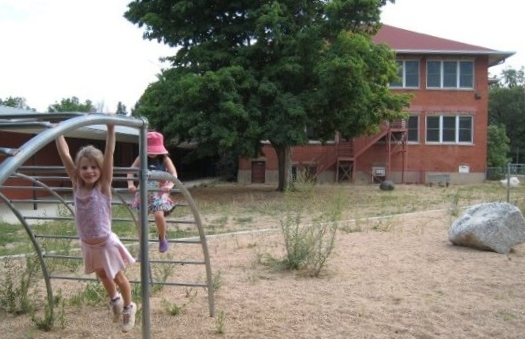Defining the “New Normal”
Local author and environmentalist David Wann describes in his new book, The New Normal, how the economic recession together with the rapidly escalating global warming and resource depletions are driving us to rethink the American Dream of large homes, big cars and continuous consumption. The project at Washington School is evolving to reflect these ideas.
To reiterate, Jim Leach’s company, the Wonderland Hill Development Company (WHDC), closed on the property in April of 2008, before incorporating the RG’s (see Part I) guiding principles into a design and before the housing bubble burst in September of 2008.
The final project, as approved by the City Council in early 2009, reflected many of the recommendations formulated by the RG, including a public park at the corner of 13th and Cedar, fewer residential units (33 instead of 40), and less commercial space in the building along Broadway. It retained the same basic elements as in the original 2006 response to the RFP such as the cohousing community of integrated market rate and affordable housing. The final design was more contextual with the surrounding neighborhood and included more open space. However, fewer living units meant higher per unit cost recovery, adding to the economic stress on the project.
The plan was to obtain final city approvals soon after entitlements and begin construction in late 2009. But, the housing crisis intervened, and obtaining construction financing was nearly impossible for two years. Also, some of the original cohousing community members dropped out citing the recession and the drawn out approval process. On top of that, the new condominium market in Boulder slowed to a near stop, creating a glut of unsold inventory in downtown Boulder.
In spite of all these difficulties, the project’s location and community-based concept has continued to draw attention. In late 2010, interest increased when WHDC began offering first phase, upscale units in the historic school building at substantial price discounts for early buyers.
With a critical number of reserved units and some creative financing, WHDC has finally been able to secure the Phase I construction financing for the school and the six single family homes surrounding the park at 13th and Cedar.
The size of the single family homes was an issue during the final city approval process and the maximum size of each home was reduced from the 3,900 to 2,500 square feet of living space above ground plus a two car garage and the possibility of a small studio over the garage.
The lingering recession together with environmental concerns have shifted societal values toward smaller, more energy efficient homes and this has now had a direct impact on the design of the six single family homes. The first two house designs are approximately 1,400 square feet maximum in main floor area, but both plans have small second floor areas mostly over their garages and possible finished basement areas. These new plans are intended to be primarily one story above ground as opposed to the full two story homes shown on the approved plans. This will naturally make the homes lower and smaller and more compatible with the older homes in the neighborhood. Ironically, this type of home is more contextual and what the neighborhood had asked for all along. Construction is expected to begin in early summer of 2011.
Phase II of the project will consist of the remaining 17 living units in four buildings that surround a courtyard preserving the large maple tree on the north side of the school. The largest building fronts along Broadway, has parking underneath, and will contain the cohousing common house and two 1,500 square foot neighborhood office spaces on the first floor.
The open space at Cedar and 13th Street is currently planned to be dedicated as a public park with existing trees and a open grass area. It will likely be maintained by the Washington Village Home Owner’s Association through an agreement with the city parks department. We’ve had some discussions about honoring, in some way within the park and with the families’ consent, Charlie Zucker and George Gless, who both passed away recently and were both very instrumental in bringing resolution to the contentious development process.
The Importance of Community and Our Sense of Place
“People who can agree that they share a commitment to the landscape/cityscape — even if they are otherwise locked in struggle with each other — have at least one deep thing to share.” – Gary Snyder
In his book, Wann also emphasizes that community at the local level is an important part of transitioning to the “new normal.” Neighborhood community is the basic building block.
Creating and maintaining a great neighborhood requires courage and time to find out what we agree on and even more courage to overcome our differences. Boulder is lucky to have many great neighborhoods and people with a strong sense of place. And, even though we often find ourselves locked in struggles around our strong sense of place, it is the one thing that we share. We hope that, in this case, the struggle is behind us.




 (7 votes, average: 4.29 out of 5)
(7 votes, average: 4.29 out of 5)